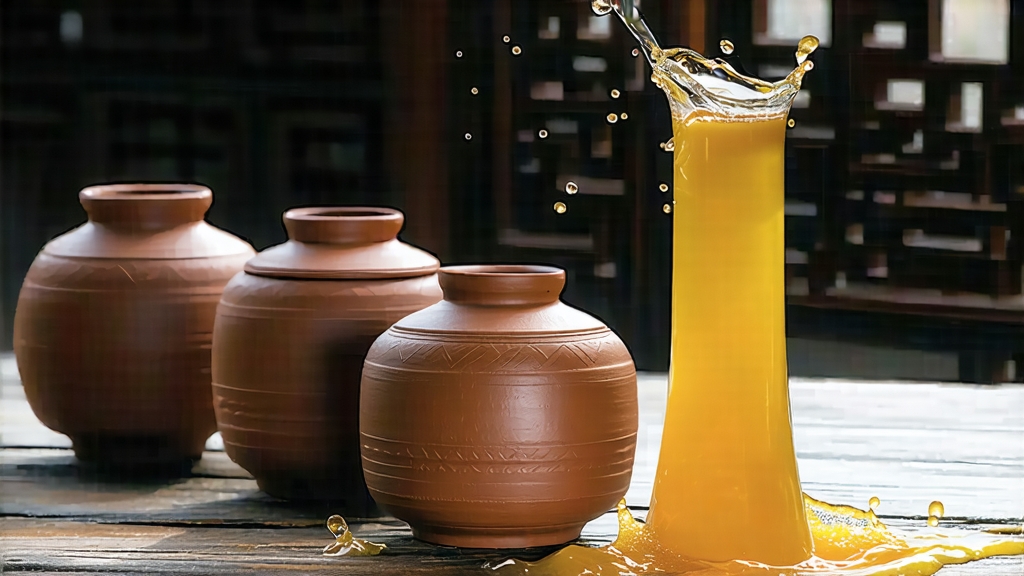
Liu Bao cha, literally “Six Forts tea,” is the quiet genius of China’s dark-tea family. While Pu-erh has conquered auction houses and Instagram feeds, Liu Bao has spent the past four centuries maturing in the humid mountain cellars of Guangxi, emerging only when its liquor glows like polished amber and its aroma recalls both betel leaf and ancient library. For international drinkers who think “fermented” means only compost or funky barnyards, Liu Bao offers a softer, sweeter rebuttal: the taste of time itself, bottled in a leaf.
History: From Border Garrison to Maritime Silk Road
The name refers to the six fortresses set up during the Ming dynasty to defend the imperial frontier against Yao uprisings. Soldiers needed calories, medicine, and something safer to drink than river water; compressed, slow-fermented tea satisfied all three. By the Qing, Liu Bao had become a tax commodity shipped down the Xun River to the port of Wuzhou, where it was loaded onto junks bound for Hong Kong, Singapore, and eventually Malacca. There it entered the diets of tin miners and dock workers who believed the tea “cut grease” after a heavy meal of coconut rice and mutton curry. In 1886 the British colonial medical officer William MacDonald noted that “the coolies drink a black tea from Kwang-si that prevents fever in the swampy godowns,” one of the earliest Western references. When the Suez Canal shortened voyages, Liu Bao’s slow journey was replaced by quicker Ceylon shipments, and the tea slipped into obscurity—until now.
Micro-terroirs within Guangxi
Liu Bao is not a single township but a mosaic of micro-climates folded into the Dayao Mountains. The classic core is the village of Liubao itself, where red lateritic soil rich in iron and aluminum forces the tea bushes (predominantly a large-leaf Assamica varietal called “Qingma”) to send roots deeper, concentrating polyphenols. Further west, the town of Gupi produces a leafier, more floral style because cooler nights slow metabolism; eastern Lingyun County yields a plumper, jade-green leaf that darkens dramatically during piling. Purists speak of “three rivers, five colors”: the Xun, Gui, and Liu rivers each deposit different mineral loads during misty dawns, tinting the finished leaves from rust to ebony.
Craft: The Invisible Mold That Sings
Unlike Pu-erh, Liu Bao is never sun-dried raw; it is first wok-killed at 280 °C for exactly four minutes to freeze the green enzymes, then rolled until the leaf spine audibly cracks. The crucial step is “dui zi” (piling): leaves are heaped 70 cm high inside a bamboo-lined room whose windows are opened only when outside humidity climbs above 85 %. Over the next 25 days indigenous microbes—primarily Aspergillus niger, Blastobotrys adeninivorans, and a Guangxi-specific yeast codenamed WXS-2—consume soluble sugars, raising the leaf temperature to 46 °C before tea masters “fan” the pile with cypress paddles to re-oxygenate. The process is stopped when a golden “golden flower” (Eurotium cristatum) freckles the leaves like tiny suns; this mold is not the goal, but its appearance signals the ideal moment to press. Finally the tea is steamed, packed into 40 kg bamboo baskets called “lǒng,” and lowered into limestone caves whose year-round 22 °C and 90 % humidity act as a natural incubator. There it hibernates for a minimum of three years, often twenty, breathing through the basket’s pores and swapping molecules with the mountain air.
Aging Lexicon: How to Read Time in a Cup
Young Liu Bao (1–3 years) smells of pine sap and wet paper; its liquor is tawny, with a tannic bite reminiscent of Barbaresco. Middle age (5–10 years) sees the emergence of “betel-nose,” a sweet-spicy note shared by the areca nut chewed across Southeast Asia, plus a camphor coolness that lingers on the canine teeth. Old Liu Bao (15-plus years) turns syrupy; the infusion coats a glass like Madeira, delivering flavors of dark raisin